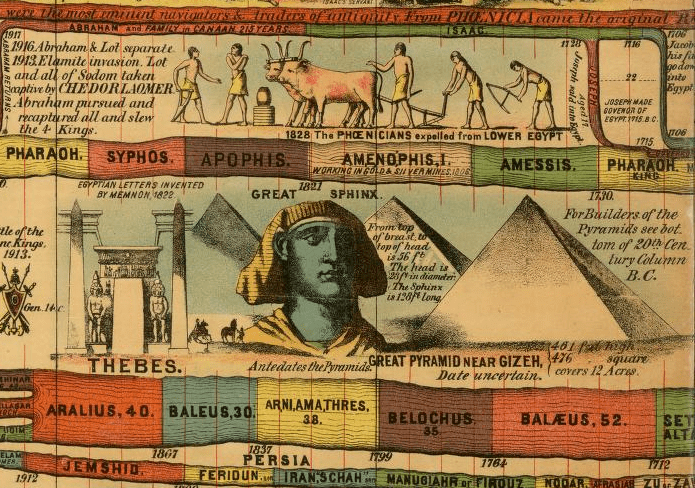Greetings. I designed the following lesson to get students to interact with the material from multiple angles. This always helped me as a learner. I hope you enjoy.
Content
In 3rd grade Language Arts kids learn about story sequencing, and this 2-day lesson will cover the proper usage of related vocabulary. Kids will learn words and phrases to help them communicate their thinking in a clear, ordered way, and will demonstrate their use in a couple of activities.
A focus will be placed on learning sequencing keywords such as “first, next, then, before, after, finally, etc.” Kids will be presented with choices of keyword patterns and be asked to use the option that fits what they’re trying to say. For example, “In the beginning, then, after that, In the end” might be appropriate for a story summary while “Step 1, step 2, step 3,” would apply more to directions such as for a recipe.
Finally (wink), students will work in groups to produce a poster, and together will present their artwork and thinking to the class.
Process
The lesson will play out as follows:
Day 1
- Students will hear a brief lecture on sequencing featuring examples of keyword strategies and vocabulary. (5 mins)
- The instructor will read the story “Rosie Revere Engineer” to the class, and then walk through the sequence of the story, writing out a summary demonstrating proper usage of sequencing keywords. (15 mins)
- On the overhead, students will be presented with 3 different types of writing (a narrative, a recipe, and a historical account of an event) with sequencing words cut out. They will work with a partner to discuss which system of keywords best applies in each instance. The teacher then leads a brief class discussion. (10 mins)
- After a brief introduction, groups of students will receive an envelope with strips of paper containing a story, recipe, or historical account that has been chopped up. By identifying keywords, kids will reassemble their story and glue it to a poster. Then, they will decorate their poster in a way that communicates something about their story/recipe/history. (This part of the lesson will end Day 1 and carry into Day 2)
Day 2
- The instructor will reorient the class to their projects and briefly discuss expectations for the group presentations. (5 mins)
- Groups will finish work on their posters and have time to prepare their presentation. (15-20 mins)
- Groups will present their work. (30-40 mins)
- Teacher-led class discussion to address questions and summarize their learning experience. (5 mins)
Product
Working as a group students will produce a work of art related to their unique story/recipe/account. The artwork must be thoughtful in the sense that it has a clear connection to the related writing. As 5-6 kids can’t all draw on the same piece of paper, they will be asked to delegate responsibilities for the project among themselves. Ideally, some kids will produce art while others prepare themselves for the presentation. Groups will present their posters together, and must discuss the reasoning behind their ordering of the story elements, highlighting the usage of sequencing keywords. They will also discuss their decoration choices and how they relate to their story/recipe/account.
Evaluation
Summative Assessments:
The group posters will be evaluated based on the thoughtfulness of the connection to the related material and for proper sequencing of the paper strips. The presentations will be judged on level of preparation, clarity of communication, and proper usage of sequencing concepts and vocabulary .
Formative Assessments:
Formative assessments will be generated from class discussions and by interacting with students while circulating during group-work time.
Reflection
I had an unfortunate experience as I delivered this particular lesson. Due to time constraints the lesson was compressed into a 1 hour session. This meant cutting the presentations, which meant cutting the main motivating factor behind this lesson, being the desire to impress one’s peers (or fear of looking stupid in front of them depending on your predilection).
At any rate, I found myself talking way to much in the early stages of this lesson. The vocabulary pre-loading followed by the reading of a story left me dehydrated and the kids ancy. There were some behavior issues and by the end I had two kids sitting in the back of the class, banished from storytime on the carpet. This diminished the fun of the lesson for all involved, and was a result of the boiling over of pent up energy. I needed a release valve built into the lesson to give these kids a productive outlet for their energy.
Finally (wink again), the whole day came to a screeching halt when there was a fire drill, ending the lesson with me talking about the examples on the overhead. More of me talking. I didn’t blame the kids for getting bored. Sequencing was then folded into the next lesson and my paper strips went entirely to waste.
I feel this lesson helped reveal more of the style of teacher I want to be by giving me an experience of the opposite. I learned I want to lead a more interactive classroom and build in opportunities for kids to teach each other. I learned that both the kids and I appreciate structured times to blow off steam. I learned I get bad breath when I’m dehydrated (from 2 different kids, ouch!). But in the end, I’m excited to try again.
Photo: A snippet of Sebastian C. Adams’ Synchronological Chart of Universal History


yo no te llamo jefe por que tu no es un patron.
#spanishskillz
i thought patron was a tequila….